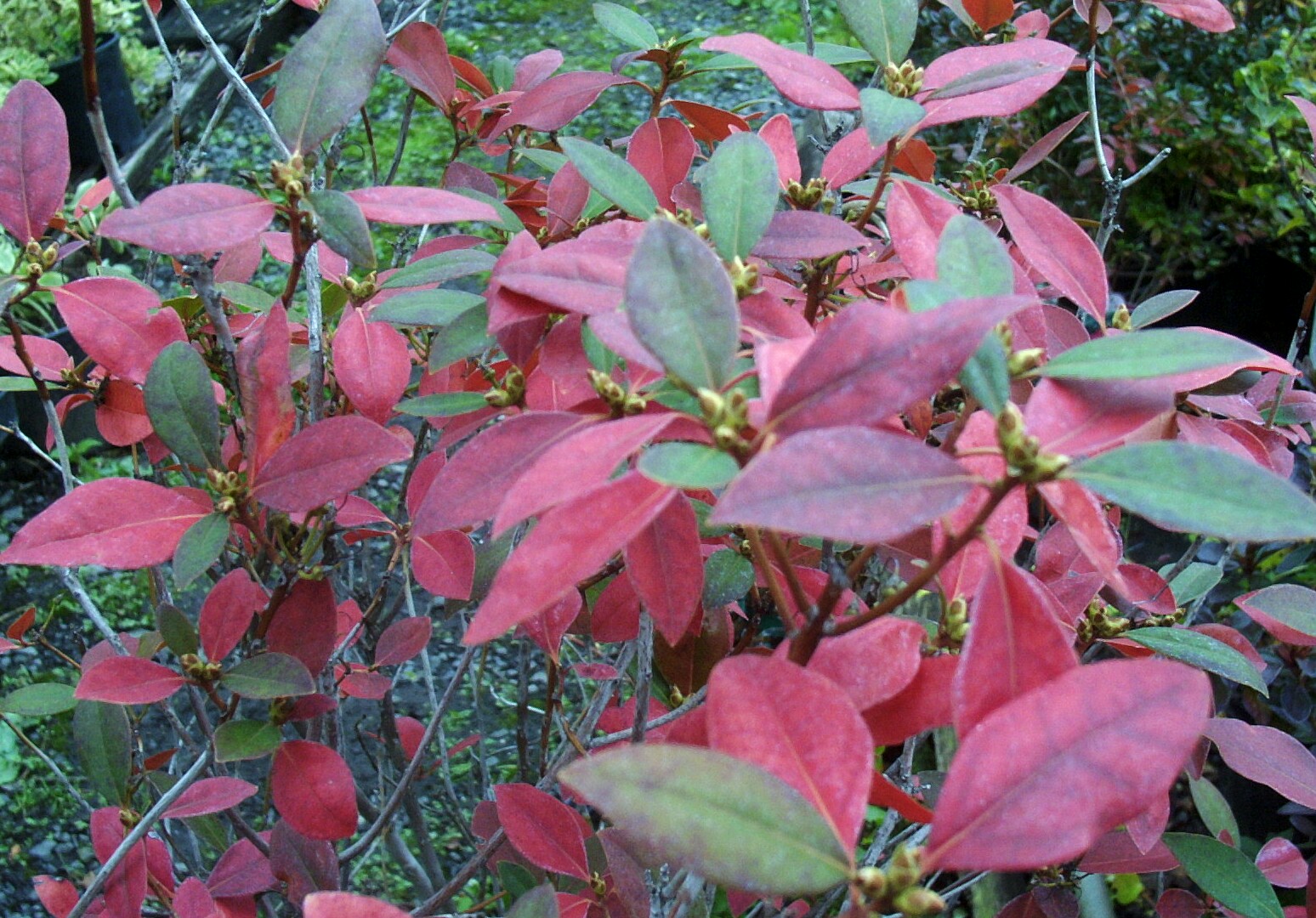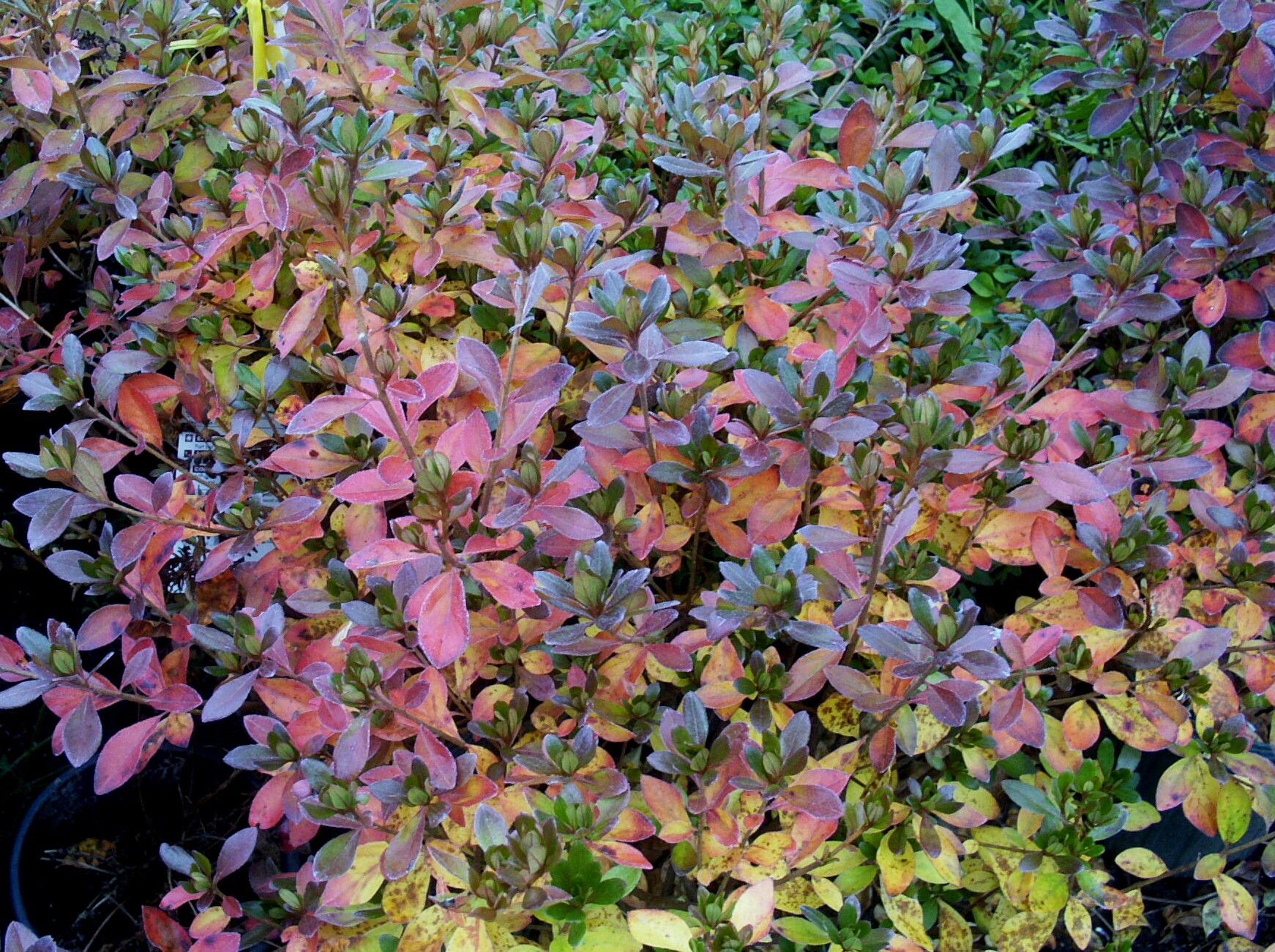



Azaleas and Rhododendron showing examples of senescence in October
As temperatures start to drop in October, many evergreens begin to change color on the inside of the plant. Pines, arborvitea, spruce and many other needled coniferous plants turn yellow. Many broadleaf plants like pieris, rhododendron, azalea, and ilex among others also turn a bright yellow. Some rhododendron and azaleas turn red. This coloring can develop at an alarming rate. The term for this natural condition is "senescence". This is also the process that causes deciduous plants to color in the fall. Leaf senescence is also a way to to get rid of old and less efficient leaves in both deciduous and evergreen plants. It is also a chance for the plants to prepare itself for winter and recycle some of it's nutrients in the form of leaves that will drop and break down into nitrogen and phosphorous, etc. While it can be scary seeing the leaves change on these plants, there is no need to do anything and the natural process will stop on its own. Once it has stopped, wind, heavy rain, or even a physical brushing of the yellow growth, can knock the colored leaves off. That showed be the end of this process and further change until the next fall.